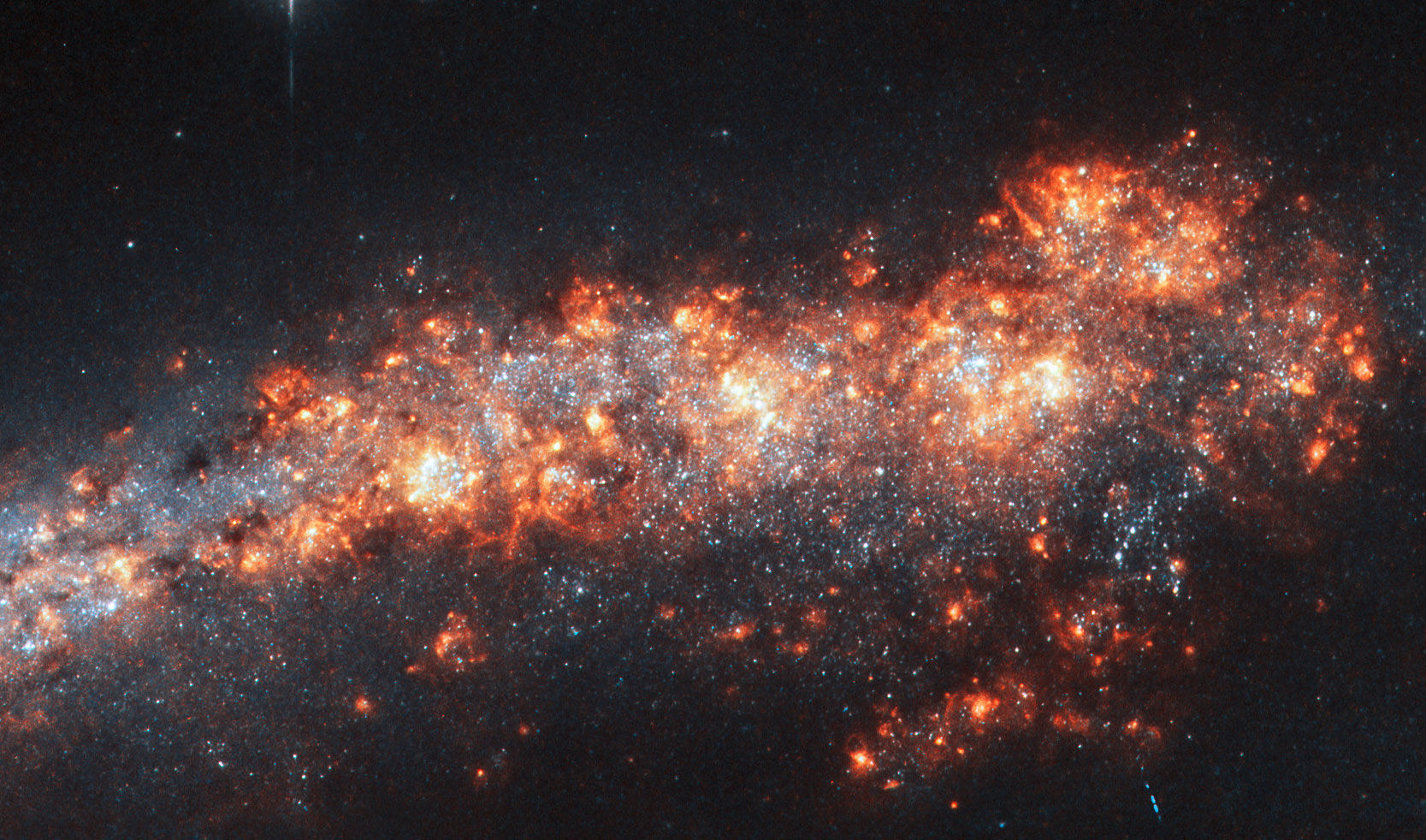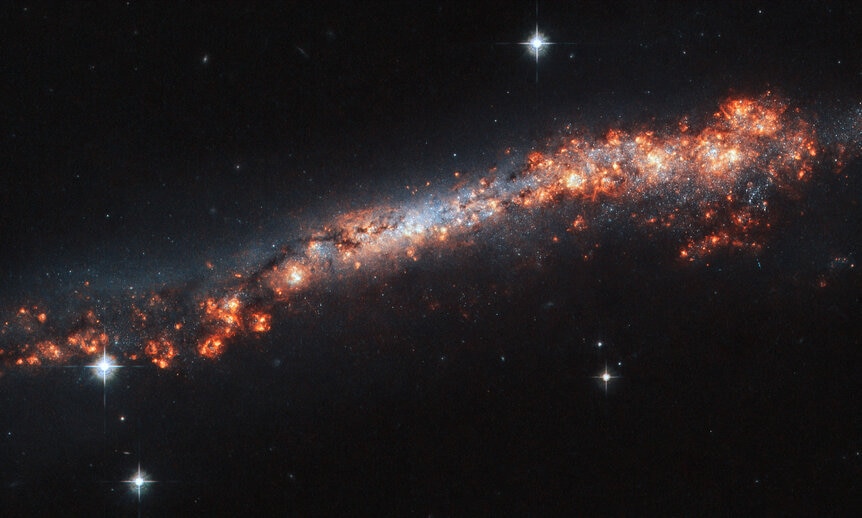Create a free profile to get unlimited access to exclusive videos, sweepstakes, and more!
That's OK, NGC 3242: Having that much gas would make anyone edgy

Every now and again I'll see an astronomical image and I'll think, "Holy wow, that's so cool!"
… and then a moment later, looking at it more carefully, think, "Well, that's weird."
This was exemplified when I was semi-mindlessly scrolling through Twitter, and this tweet from the Hubble Space Telescope folks slid into view:
Hey, neat! I love 1) spiral galaxies, especially b) ones that are seen edge-on. The link goes to a NASA page that has a description, but I know that the actual Hubble sites have more info, the kind that I need. A quick search led me to the European Space Agency's Hubble site, where I was able to grab the high-resolution version of this galaxy, and yeah, wow:
Right?
That's NGC 3432, a spiral galaxy about 30 million light years away. That's close as far as galaxies go, but still well outside our Local Group of galaxies (a small collection of galaxies including our Milky Way, the Andromeda Galaxy, and a few dozen smaller ones; the group is a few million light years across). At that distance Hubble can see pretty good detail in a galaxy. Obviously.
So that's why my reaction was "Wow!" when I saw it; it's spectacular. But then I took a second look, and that's when my reaction changed to momentary puzzlement.
Spiral galaxies like NGC 3432 (or, for that matter, the Milky Way) are pretty flat. Their overall shape is that of a thinnish disk, roughly the proportion of three DVDs stacked up. When seen face-on you get those dramatic spiral arms swooshing around, tons of stars visible (for nearby ones, at least), and most likely lots of giant gas clouds peppering the arms.
But seen edge-on, a lot of that goes away. The arms are part of the disk, so from "the side" you just see the disk. Stars may still be visible (again, for nearby galaxies, and then you're mostly seeing the very brightest stars due to the vast distances involved dimming everything else). The gas clouds are usually hard to see, blocked by huge streamers of opaque dust in the galaxy.
Obviously, that's not the case here! I wondered if maybe this was not a spiral at all, but some odd irregular galaxy. But it's too elongated to be just some weird shapeless irregular; that length-to-width ratio is far more likely with a spiral (I'll note that some catalogs list it as irregular and some as spiral).
But then what's the deal with all those gas clouds? That's odd. In general you get lots of glowing nebulae like this when galaxies collide, crashing gas clouds together and triggering lots of star formation that then light up those clouds. But it turns out NGC 3432 has a relatively low rate of star formation! That surprised me. The linked paper suggests instead that it's interacting with a nearby dwarf galaxy (UGC 5983), and the gravitational disturbances are creating structures in the galaxy where clouds are clumping up a bit. They may collide in the future, but for now they're merely pulling and tugging at one another.
That leaves one more thing that puzzled me for a second: the color. Those gas clouds look orange! Usually they look red or pink due to the glow of warm hydrogen. Now, any image of an astronomical object has colors that are fiddled with; you never really get an image that shows you "what it would look like if you were there." Our eyes just don't see colors the way digital detectors do. This gets even more complicated when the filters used to take the image only see a very narrow slice of color, which is not at all how our eyes work.
Then I got suspicious that this was a two-color image, and it turns out that's correct. A "natural color" image mimicking how our eyes see would combine observations taken through a red, a green, and a blue filter (the cones in our eyes are sensitive to those colors). This image of NGC 3432 was taken using only two filters, one that lets through mostly red light, and another that sees just a very thin slice of the red part of the spectrum. That second filter is used to look for hydrogen and nitrogen in nearby galaxies … elements that are common and glow brightly in gas clouds.
Aha! That explains why we see the gas clouds so predominantly — the filter accentuates them — and why they look orange. It's not a natural color image. Digging a little deeper, another suspicion of mine was confirmed: These images were taken to complement earlier Hubble images taken at bluer colors. The astronomers who took them are looking for clues on how stars form in nearby galaxies, and needed more information for their research. They targeted 48 such galaxies with Hubble, using filters that would fill in the gaps, so to speak.
I love all this, how science, technology, and (let's be honest) art intersect. It's a gorgeous image, born of certain needs, which will help us understand how stars are born. Any one of those three is good, but all of them together? Holy wow, indeed.















